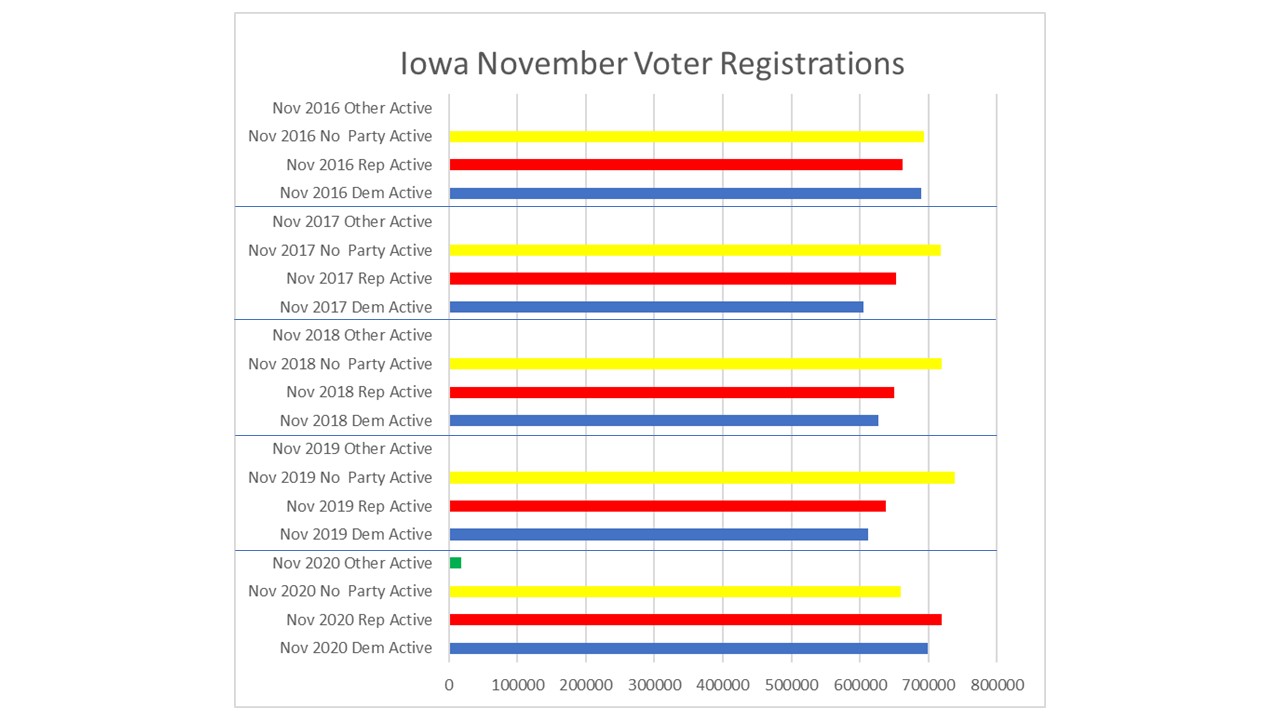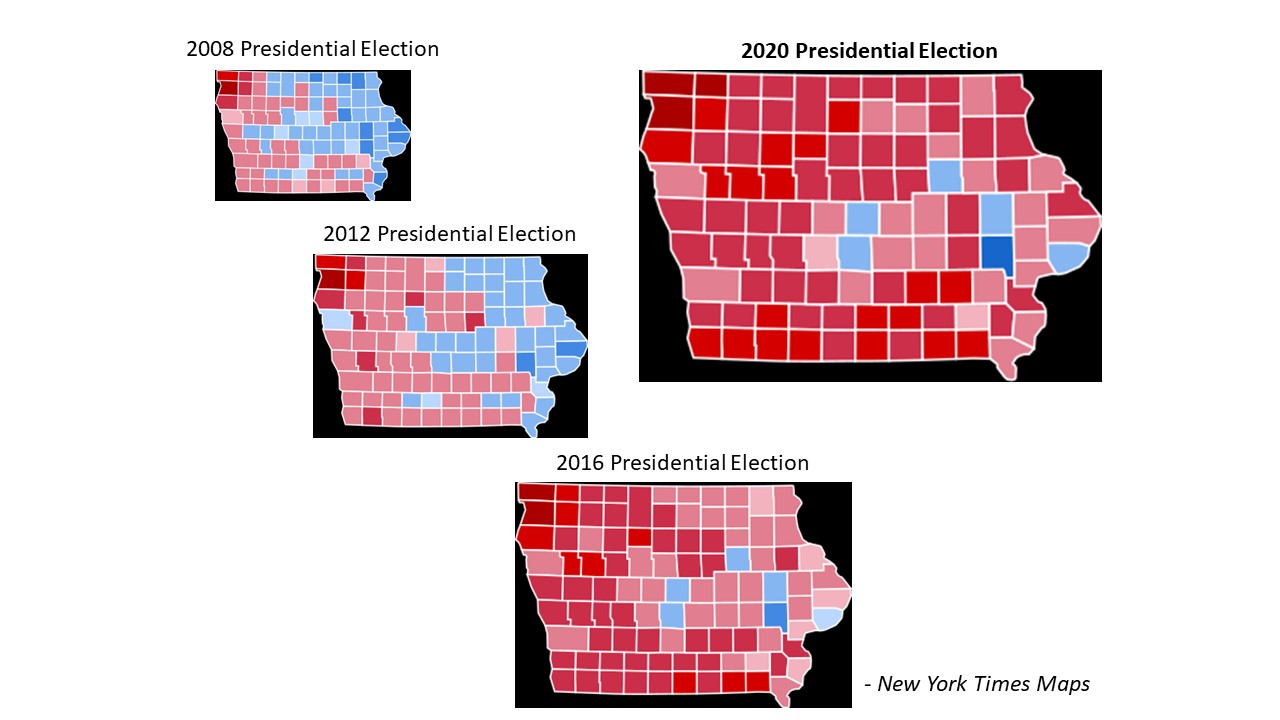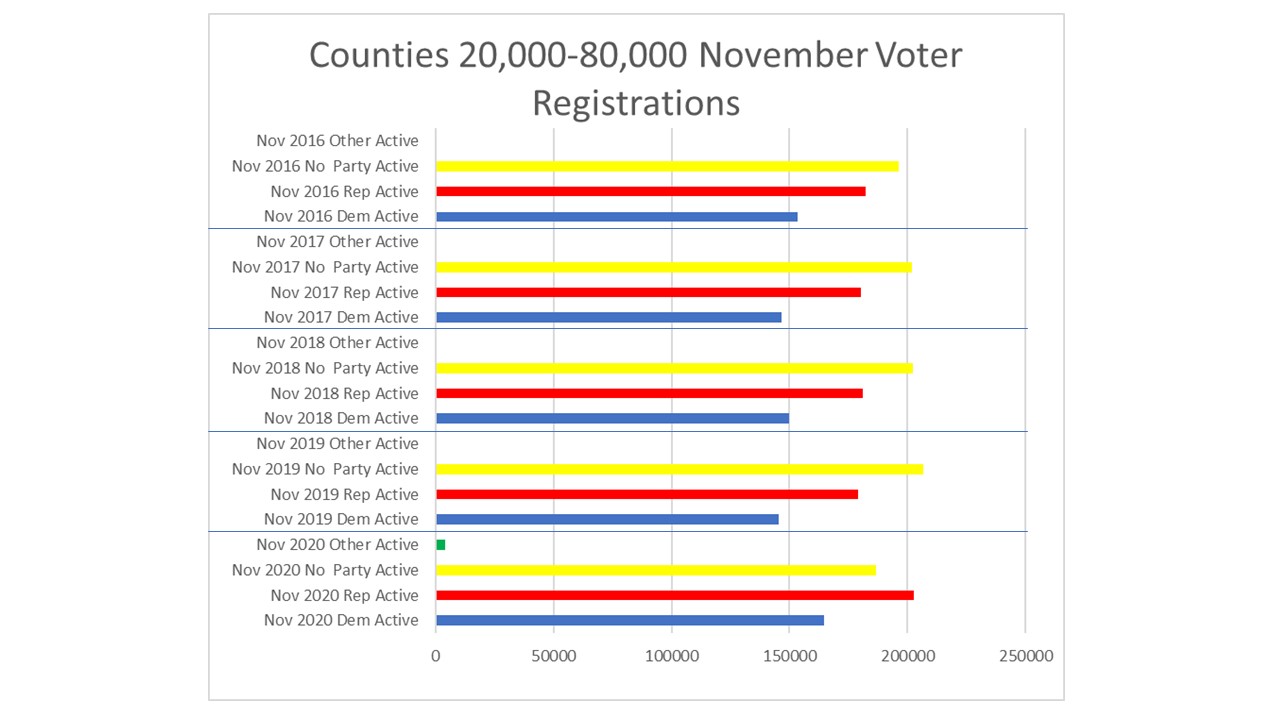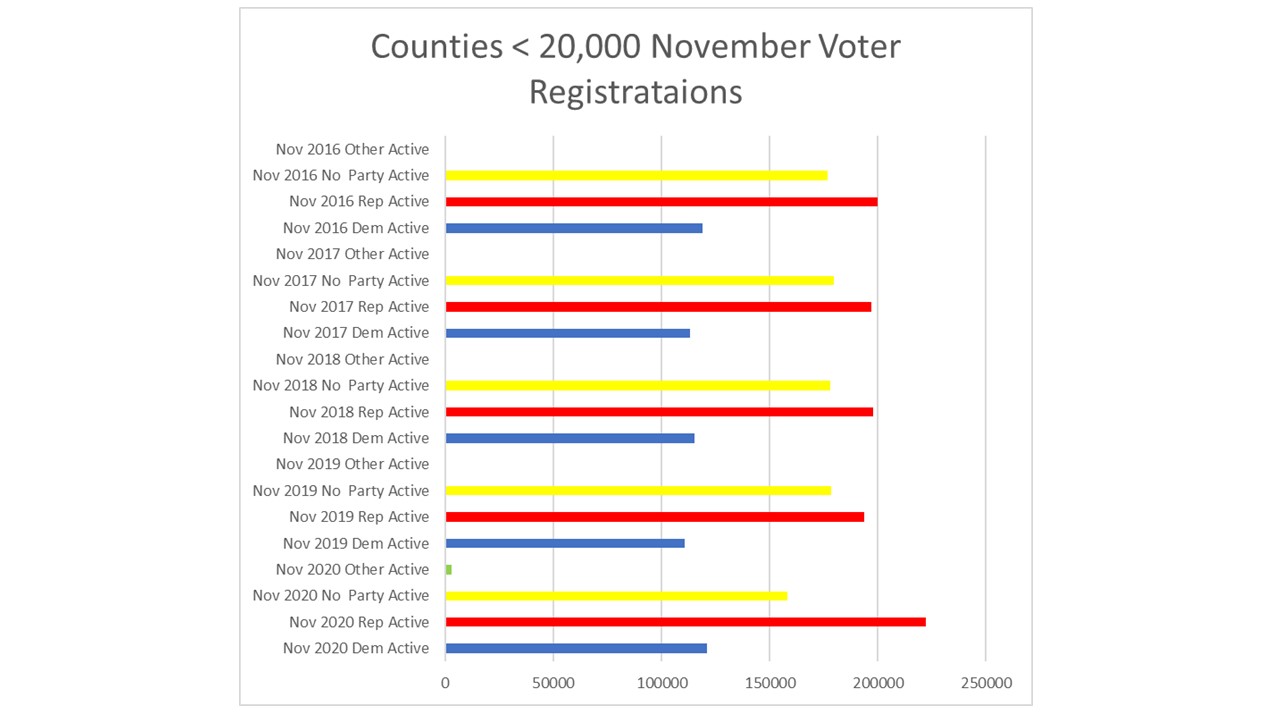Glenn Hurst: “Democrats across Iowa are looking for a candidate who is not playing to the middle, the establishment. They want to vote for someone who runs as a Democrat and espouses Democratic values.” -promoted by Laura Belin
In 2016, when Bernie Sanders lost the primary to Hillary Clinton and then Donald Trump won the presidency, Iowa Democrats were at each other’s throats. Blame was laid on the left-leaning voters for not turning out for Clinton. The establishment was accused of running a system to “fix” the nomination for an unpopular candidate.
This intraparty drama was such a common phenomena across the country that a reconciliation committee, a.k.a. the “Unity Panel” was formed to address the conflict.
If my Facebook wall and Twitter feed are a measure of political discontent, the party is absolutely pacified. There has been a relative lack of backroom chatter regarding the presidential outcome this year compared to 2016. The Joe Biden win appears to be taken as a relief and eyes have turned away from questioning why he lost in Iowa. This does not mean the Iowa Democratic Party has wiped its brow and is moving on with business as usual.
The party’s State Central Committee is poised to clean house with regards to its leadership. And, though directly related to the outcome of the 2020 election, the focus of most disappointment has been on the party’s inability to elect Democrats to the state House or Senate.
These are appropriate areas of concern, but the outcome of Iowa’s presidential voting speaks volumes as to where the party has become the lost shepherd of its voters. This time, the left is not being pummeled for not showing up. The establishment is not being blamed for running the wrong candidate. Both of those claims are likely legitimate:
Democrats should be competitive in Iowa, at least at the top of the ticket. Voter registrations for each party are essentially comparable. Based on the Secretary of State’s data, each party ebbs and flows slightly and there is a robust no-party registration roll where influence can presumably be exerted.
But the Iowa map of top of the ticket outcomes does not reflect the expected outcome of such close registrations. What was once a robust statewide party, is now represented only in our largest urban centers when measured by votes for the top of the ticket.
Voter registration data confirms the disproportionate number of registered Democrats to Republican in counties with fewer than 80,000 people, but this ratio is essentially static. Democratic registrations have kept pace with the proportion of Republican registrations except in the 2020 race in our smallest counties.
The reason for the consistent shift of Democratic voters away from the top of the ballot is multifocal:
and
All of the above play a role. But one message from Iowa Democrats should not be missed. Looking at the 2020 Iowa caucus results; the message is plain as day.
Democrats across the state are looking for a candidate who is not playing to the middle, the establishment. They want to vote for someone who runs as a Democrat and espouses Democratic values. These are not fringe voters, these are the ranks of the Democratic party. In a caucus system that is more exclusive than inclusive to working class voters, the working poor, the disabled, and minorities, establishment candidates should have waltzed to victory. But it was the Bernie Sanders/Elizabeth Warren voters that set the tune for the Iowa caucuses.
Looking at the first and second alignment of caucus goers, the counties that went for Sanders and Warren take a majority of the large and medium sized counties. A young charismatic candidate, Pete Buttigieg, whose establishment leanings were balanced with the identity of a rural state, excelled in the small rural counties. The Biden and Amy Klobuchar campaigns made small headway in scattered counties.
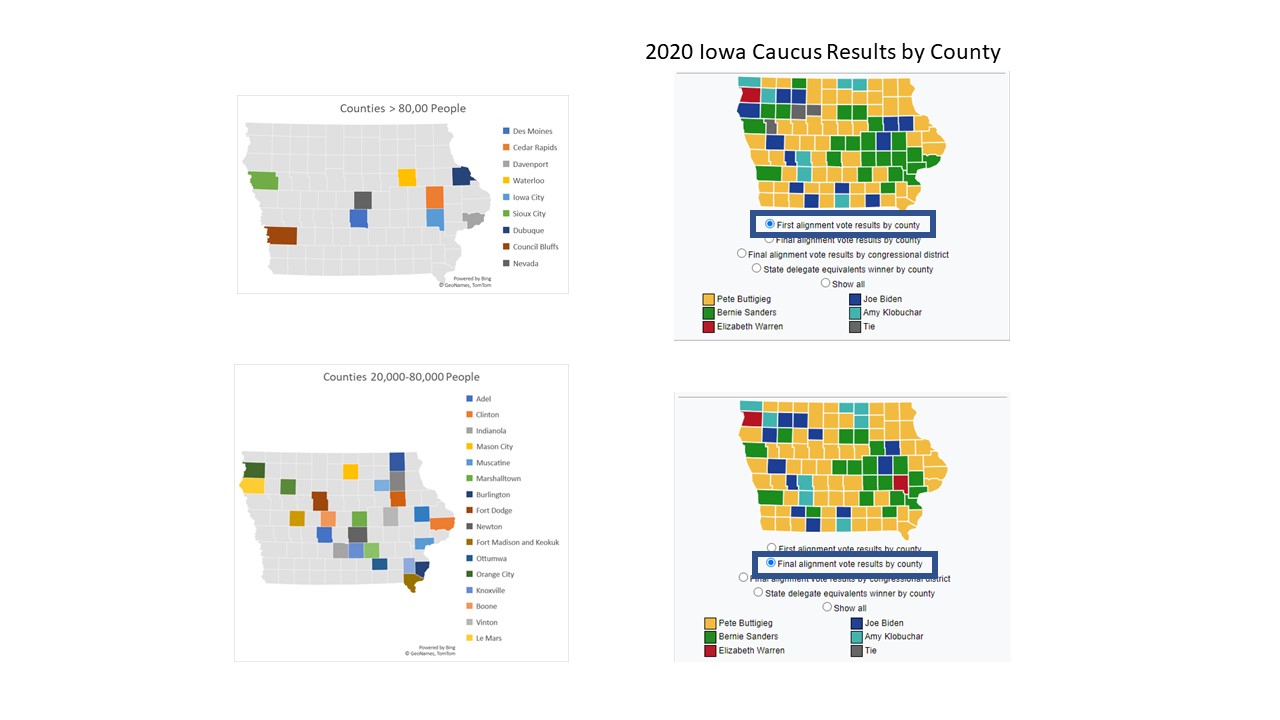
Iowa caucus result map from Wikipedia
Though the argument can be made that running to the middle may win middle-leaning Republicans and no-party registrants, it failed in Iowa in 2020. The evidence supports that running to the middle does not deliver a top of the ballot win in most of Iowa.
The outcome of our U.S. Senate race and three of our Congressional district races demonstrate this as well. The Democratic Senatorial Campaign Committee leaped in early, supporting Theresa Greenfield. She is arguably a dedicated Democrat and candidate, but the imaging of her race was moderated by that association.
Representative Cindy Axne’s win, in traditionally conservative Southwest Iowa, makes sense because she ran as Democrats lean in that region. The third Congressional district caucused mostly for Pete Buttigieg. Axne will be the first to tell you she did not run to the hard left. She did not propose Medicare for All, she ran on access to health care. She ran on her work for “All Iowans” related to constituency work around the flood and ethanol waivers. It was a message that resonated with southwest Iowa Democrats because it came from them. Her campaign is the example of a candidate who knows her district and ran to represent it.
The fourth Congressional district has unique challenges related to voter registrations. They weigh heavily for the Republican Party. J.D. Scholten’s grassroots efforts made a demonstration that though they may not have the numbers to win, Democrats can still be motivated to go to the polls.
Scholten’s tactics matched those of Sanders, who often passed on large party gatherings to meet with small groups of people with specific issues. Both candidates shared a process that would motivate a voter. In this case, the process of the Sanders campaign, not necessarily the politics of the candidate, was mirrored to an outcome that was better than expected.
It is easy to see how the Iowa map from 2016 would suggest it foolhardy to run to, and like, the left. But we are scarcely different from New York and California when you zoom into the precinct level. Those states elect Democrats up and down the ballot, though a mapping of the top of their ballot looks like two to four urban centers of blue, and the rest of the state red. They look like Iowa but their candidates run with confidence.
As a party, Democrats have many structural issues to address, but first we must understand what type of candidate the voting Democrats will support. Candidates who are willing to run unabashedly on those principles will more likely have success. Might the middle stay home? Perhaps, but the past three general elections have proven that no amount of begging and shaming will bring out the left, but candidates will.
If we keep doing the same thing, we can expect to continue getting the same results. We need to stop fearing the demonstration of our Democratic values and we need leadership that has a pulse on the values of the voters we are trying to represent.
Glenn Hurst is Chair of the Rural Caucus of the Iowa Democratic Party and chairs the Third District Central Committee. He is a rural physician from Minden Iowa and serves as an elected official on the Minden City Council. He is Co-Organizer for Indivisible Iowa in Senate district 11 and co-founder of Seniors: Fighting for Our Lives.


